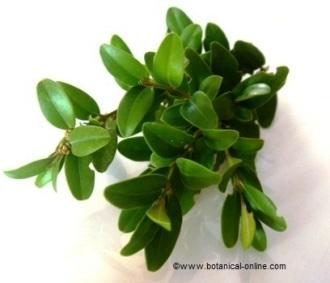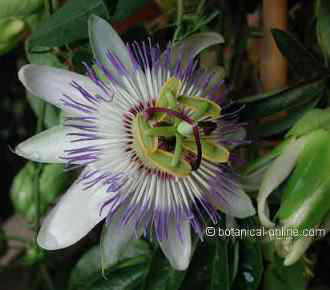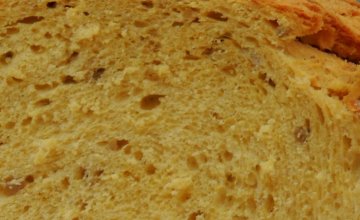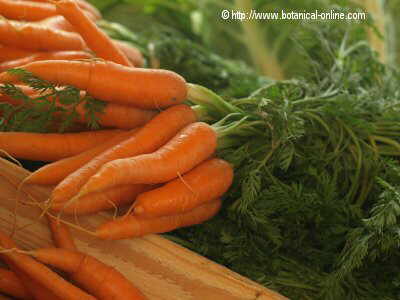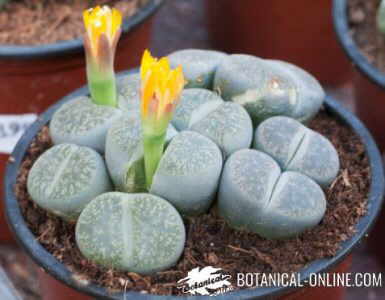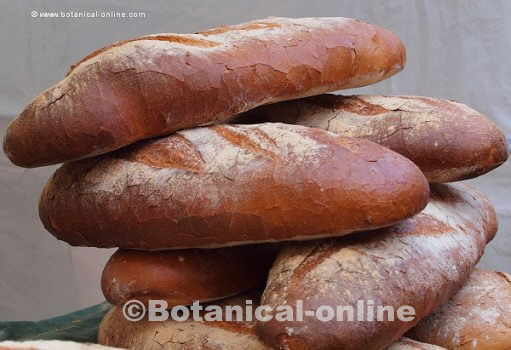Contents
HOW TO GROW PAPAYAS
Characteristics of papaya plant (Carica papaya)
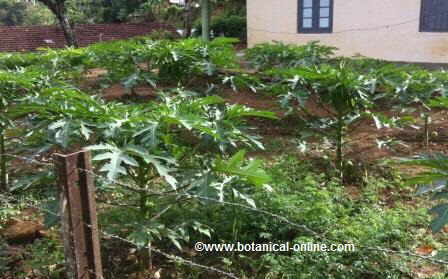
Papayas growing in a field
Papayas are large plants of the Caricaceae family of which there are more than 70 species. They reach up to 9 m. of height when they are cultivated, but they do not usually pass the 2 m. in the wild.
Hollow trunk in the inner part, green or dark purple, without branches except a few that are born in the upper part which reminds the palm trees.
Palmate leaves composed, alternate up to 80 cm. of length including the long petioles of almost half a meter.
Papaya flowers hang from the axils of the leaves and then the fruits, in dense clusters. They are fleshy berries with black seeds inside
In the wild it is a dioic plant, that is to say that there are male and female specimens. Cultivated species have been hermaphrodites.
Papaya weather needs
This is a plant of tropical or subtropical climates. It grows in warm places where frost does not occur.
Frosts can damage trees quickly, even for a short period of time. Relatively low temperatures cause the quality of the fruits to be lost.
Locate them in full sun and in a place protected from the wind. Although they can produce fruit in the shade, they will not be sweet if the plant does not receive direct sunlight.
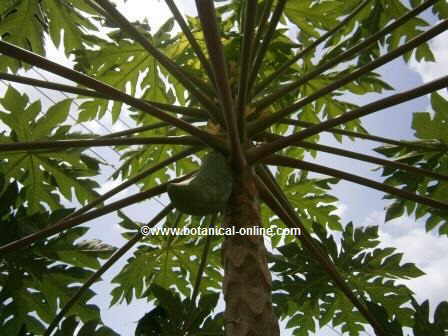
Photo of a papaya tree with some fruits
Papaya soil requirements
Outside their place of origin, papayas should be grown in greenhouses on soils rich in organic matter, provided they have good drainage.
- Type of soil: sandy loam, loose, deep, well drained.
- Soil reaction: optimum pH between 6 6.4, slightly acidic (from 5.5 to 7.5)
- They need a certain degree of humidity since they are not resistant to drought.
Papayas irrigation
Papayas need abundant watering and a lot of sun, since, although they can produce fruit in the shade, they will not be sweet if the plant does not receive direct sunlight.
Very high summer temperatures stimulate flowering.
PROPAGATION OF PAPAYAS
Sexual reproduction by seeds
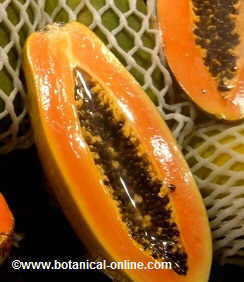
Papaya fruit showing the flesh and the seeds
- They usually reproduce from the seeds that have a very fast growth because they can bear fruit before the first year. Its vegetative life is over 5 or 6 years.
- The seeds are sown fresh, between the first 4 days after removing them from the fruit.
- Germination can take 3 weeks.
- Plant in a deep nursery.
- Transplant when the first true leaves appear in deep pots.
- During the first winters should be protected from the cold if it is not planted in tropical areas.
- Do not irrigate excessively (avoid flooding or flooding of land)
- Cover with mulch especially in subtropical climates.
![]() More information on papaya.
More information on papaya.


